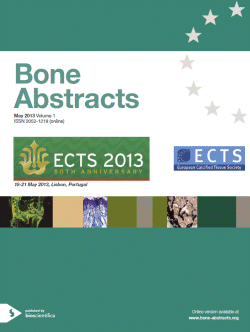Searchable abstracts of presentations at key conferences on calcified tissues

European Calcified Tissue Society Congress 2013
Lisbon,
Portugal
18 May 2013 - 22 May 2013

European Calcified Tissue Society Congress 2013, 18 - 22 May 2013; Lisbon, Portugal



